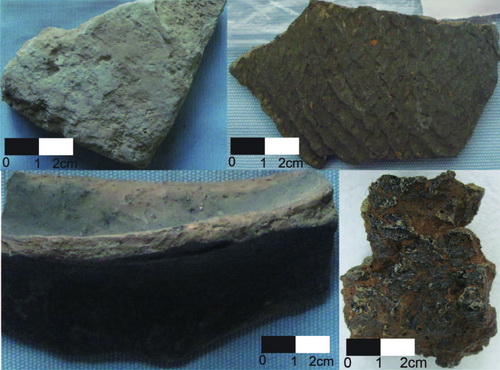Variations of Earth's geomagnetic field during the Holocene are important for understanding centennial to millennial-scale processes of the Earth's deep interior. Through archaeomagnetic study, Prof. Zhu Rixiang's lab at the Institute of Geology and Geophysics of Chinese Academy of Sciences (IGGCAS) have established the first archaeointensity reference curve in eastern Asia during the Holocene. This cirve revealed extreme behavior of the geomagnetic field, varying from a Holocene-wide low of ~27 to a "spike" value of ~166 ZAm2 (Z: 1021). This work was published in Proceedings of the National Academy of Sciences.
The geomagnetic field is generated from the motion of Earth's fluid outer core. Its behavior has significant implications for geodynamics. Materials containing magnetic minerals can record the information of the geomagnetic field when they cool down or are deposited in the field. Archaeological materials such as pottery, brick and burnt clay are favorable recorders of the field. They have been widely used to recover geomagnetic variations over periods of hundreds to thousands of years.
Under the guidance of Prof. Zhu Rixiang, Deng Chenglong, and Pan Yongxin, post-doc Cai Shuhui carried out archaeomagnetic studies on archaeological samples collected from eastern China. They obtained 21 robust archaeointensity data points spanning the past ~6 kyr. Combining with the recently published data in China, Japan and Korea, they established the first archaeointensity reference curve for Eastern Asia during the Holocene. Their new results record rarely captured extreme behavior of the geomagnetic field. They reported an exceptionally low intensity around ~2200 BCE (hitherto the lowest value observed for the Holocene) and a "spike" intensity value dated at ~1300 BCE.
The established archaeointensity reference curve can be used for archaeological dating in this area. These extreme features of the geomagnetic field revealed by their data will shed light on understanding geomagnetic field during the Holocene.
The study was done in collaboration with Scripps Institution of Oceanography, University of California, San Diego and School of History and Culture, Shandong University.
The work was supported by the NSFC grants 41504052, 41274073 and 41574061, the NSF Grants No. EAR1520674 and EAR1345003.

Figure: Pictures of archaeological samples used in this study. (Images from Cai et al., 2017)
Contact:
CAI Shuhui
Institute of Geology and Geophysics, Chinese Academy of Sciences
Phone: 86-10-82998418
E-mail: caishuhui@mail.iggcas.ac.cn